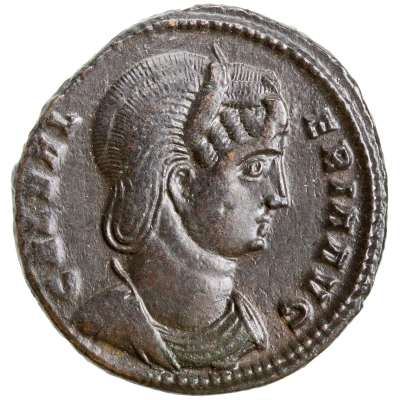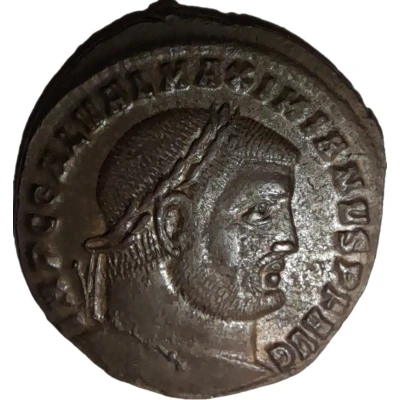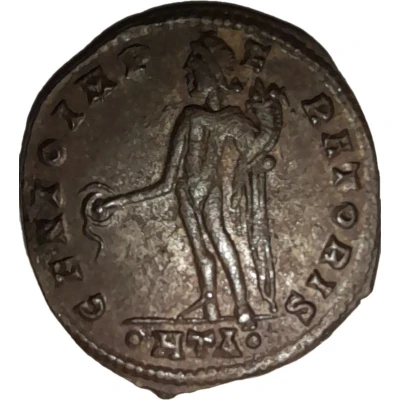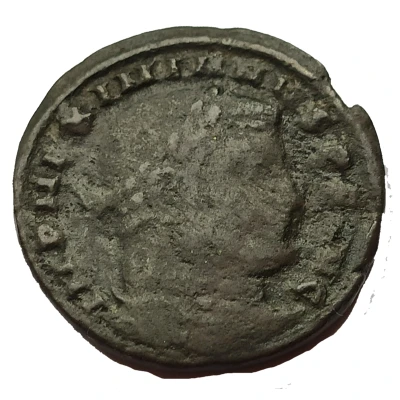


© American Numismatic Society (ANS)
Nummus - Galeria Valeria VENERI VICTRICI; Heraclea
310 year| Bronze | 6 g | 25 mm |
| Issuer | Rome › Roman Empire (27 BC - 395 AD) |
|---|---|
| Emperor | Galerius (Gaius Galerius Valerius Maximianus) (305-311) |
| Type | Standard circulation coin |
| Year | 310 |
| Value | Nummus / Follis (¼) |
| Currency | Argenteus, Reform of Diocletian (AD 293/301 – 310/324) |
| Composition | Bronze |
| Weight | 6 g |
| Diameter | 25 mm |
| Shape | Round (irregular) |
| Technique | Hammered |
| Orientation | Variable alignment ↺ |
| Demonetized | Yes |
| Updated | 2024-10-05 |
| Numista | N#152783 |
|---|---|
| Rarity index | 90% |
Reverse
Venus standing left, holding apple and raising drapery; star in left field; mintmark in exergue.
Script: Latin
Lettering:
VENERI VICTRICI
HTA
Comment
Galeria Valeria (died 315) was the daughter of Roman Emperor Diocletian and wife of his co-emperor Galerius. Born as Valeria to Diocletian and Prisca, she married Galerius in 293, when her father elevated him to the position of Caesar. This marriage was clearly organized to strengthen the bonds between the two emperors.Valeria was raised to the title of Augusta and Mater Castrorum in November 308. Since Galerius fathered no child with her, Valeria adopted her husband's illegitimate son, Candidianus, as her own...
...She was captured by a mob, beheaded in the central square of the city, and her body thrown in the sea.
Valeria was sympathetic towards Christians, while Galerius persecuted them. She was canonized as a Christian saint with her mother.
https://en.wikipedia.org/wiki/Galeria_Valeria
Interesting fact
The Nummus - Galeria Valeria (VENERI VICTRICI; Heraclea) (310) coin features an image of the Roman goddess Venus on one side and an image of the Roman emperor Constantine I (also known as Constantine the Great) on the other side. This coin was minted during Constantine's reign, which lasted from 306 to 337 AD, and it was used as a standard circulation coin throughout the Roman Empire. It's interesting to note that the image of Venus on this coin is a representation of the goddess of love, beauty, and fertility, who was highly revered in ancient Roman culture. The inclusion of Constantine's image on the other side of the coin serves as a reminder of the powerful and influential leader who ruled the Roman Empire during this time period. Overall, this coin is a fascinating piece of history that provides a glimpse into the cultural and political landscape of ancient Rome during the 4th century AD.



